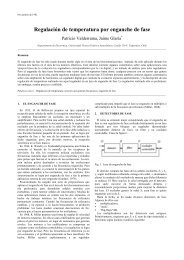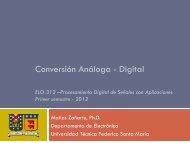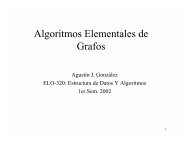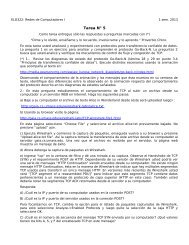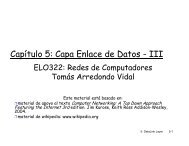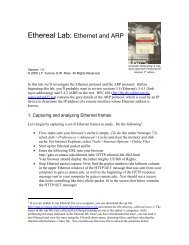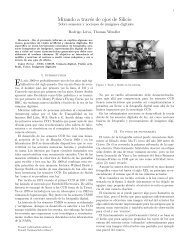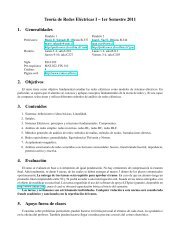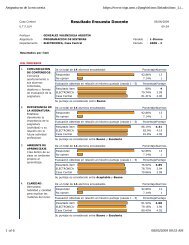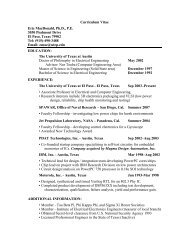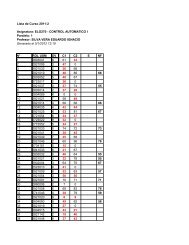ACOUSTIC COUPLING IN PHONATION AND ITS EFFECT ON ...
ACOUSTIC COUPLING IN PHONATION AND ITS EFFECT ON ...
ACOUSTIC COUPLING IN PHONATION AND ITS EFFECT ON ...
You also want an ePaper? Increase the reach of your titles
YUMPU automatically turns print PDFs into web optimized ePapers that Google loves.
xiiFigurePage5.12 Application of air-borne and tissue-borne sensitivities during the discriminationbetween components. Sensor: Air-coupled microphone protectedwith PVC 3” on the chest. Measured signal during vowel /a/: □, Estimatedsignal for vowel /a/ for tissue-borne components only: ◦, Air-bornesensitivity for such condition: ⋆. . . . . . . . . . . . . . . . . . . . . . 1246.1 Representation of a dipole source using two ideal airflow sources. Couplingbetween the subglottal and supraglottal tracts was obtained through alinearized glottal impedance. The glottal impedance in this representationwas investigated as a time-invariant and also a time-varying term. . . . 1296.2 Representation of the T network used for the subglottal and supraglottalmodels. The acoustic elements L a , R a , G a , and C a were associated with airinertance, air viscous and heat conduction resistances, and air compliance.Yielding walls parameters were divided in soft tissue (L ws , R ws , C ws ) andcartilage (L wc , R wc , C wc ) whenever needed for the subglottal tract. Theradiation impedance Z rad was attributed to the accelerometer loading. . 1296.3 Uncoupled (T1), perturbation function (T2), and coupled vocal tracttransfer function (T) from oral airflow to the glottis for a vowel /a/ and/i/. . . . . . . . . . . . . . . . . . . . . . . . . . . . . . . . . . . . . . . 1316.4 Representation of the subglottal system. The accelerometer is placed onthe surface overlying the suprasternal notch at approximately 5 cm belowthe glottis. The tract above and below such location are defined as Sub 1and Sub 2 . Figure adapted from [203]. . . . . . . . . . . . . . . . . . . . 1326.5 Representation of a dipole model using two ideal airflow sources. Thesubglottal impedance from Fig. 6.1 was decomposed to include skin neckacceleration. See Fig.6.4 for details. . . . . . . . . . . . . . . . . . . . . 1326.6 Laser grid used for HSV calibration. (a) Calibration feature using a U-shaped blood vessel on the left ventricular fold (b) Same reference lasergrid on a metric scale. . . . . . . . . . . . . . . . . . . . . . . . . . . . 1356.7 Endoview software used for the laser grid calibration scheme as in [204].The blood vessel used as calibration feature is observed on the left ventricularfold. . . . . . . . . . . . . . . . . . . . . . . . . . . . . . . . . . 1356.8 Ability of CPIF scheme to capture the “true” glottal airflow for completeand incomplete glottal closure for vowel /a/ . . . . . . . . . . . . . . . 1436.9 Ability of CPIF scheme to capture the “true” glottal airflow for completeand incomplete glottal closure for vowel /i/ . . . . . . . . . . . . . . . 1446.10 Ability of IBIF scheme to capture the “true” glottal airflow for completeand incomplete glottal closure for vowel /a/ . . . . . . . . . . . . . . . 146



